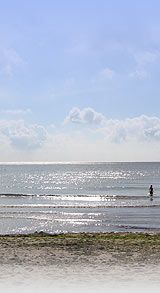Now that we have gezegde
Aantal gezegden is 1469561
varav 1407627 på engelska
Gezegde (1469561 st) Zoek
Categoriën (2627 st) Zoek
Auteurs (167535 st) Zoek
Afbeeldingen (4592 st)
Geboren (10495 st)
Gestorven (3318 st)
Datums (9517 st)
Landen (5315 st)
Idiom (4439 st)
Lengths
Toplists (6 st)
Denna sidan visar ordspråk som liknar "Now that we have proven that the black hole is at the centre of the disk of blue stars, the formation of these stars becomes hard to understand. Gas that might form stars must spin around the black hole so quickly - and so much more quickly near the black hole than farther out - that star formation looks almost impossible. But the stars are there.".
Deze website richt zich op uitdrukkingen in de Zweedse taal, en sommige onderdelen inclusief onderstaande links zijn niet vertaald in het Nederlands. Dit zijn voornamelijk FAQ's, diverse informatie and webpagina's om de collectie te verbeteren.
Här har vi samlat citat sedan 1990!
Vad är gezegde?
Hur funkar det?
Vanliga frågor
Om samlingen
Ordspråkshjältar
Hjälp till!
varav 1407627 på engelska
Gezegde (1469561 st) Zoek
Categoriën (2627 st) Zoek
Auteurs (167535 st) Zoek
Afbeeldingen (4592 st)
Geboren (10495 st)
Gestorven (3318 st)
Datums (9517 st)
Landen (5315 st)
Idiom (4439 st)
Lengths
Toplists (6 st)
Denna sidan visar ordspråk som liknar "Now that we have proven that the black hole is at the centre of the disk of blue stars, the formation of these stars becomes hard to understand. Gas that might form stars must spin around the black hole so quickly - and so much more quickly near the black hole than farther out - that star formation looks almost impossible. But the stars are there.".
Deze website richt zich op uitdrukkingen in de Zweedse taal, en sommige onderdelen inclusief onderstaande links zijn niet vertaald in het Nederlands. Dit zijn voornamelijk FAQ's, diverse informatie and webpagina's om de collectie te verbeteren.
Här har vi samlat citat sedan 1990!
Vad är gezegde?
Hur funkar det?
Vanliga frågor
Om samlingen
Ordspråkshjältar
Hjälp till!
 |
Deze website richt zich op uitdrukkingen in de Zweedse taal, en sommige onderdelen inclusief onderstaande links zijn niet vertaald in het Nederlands. Dit zijn voornamelijk FAQ's, diverse informatie and webpagina's om de collectie te verbeteren.
Här har vi samlat citat sedan 1990!
Vad är gezegde?
Hur funkar det?
Vanliga frågor
Om samlingen
Ordspråkshjältar
Hjälp till!
|
